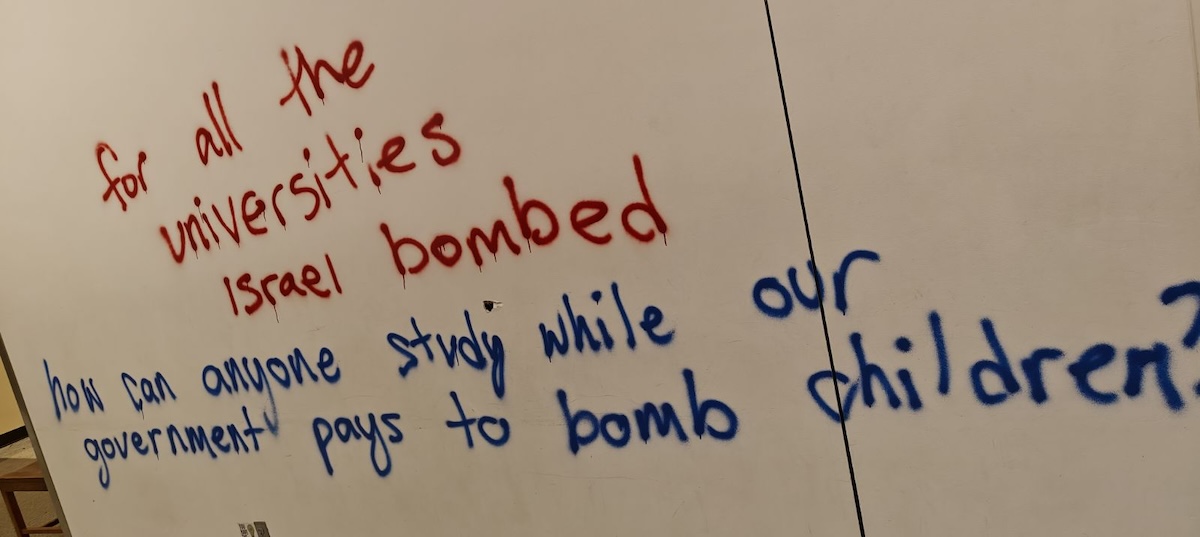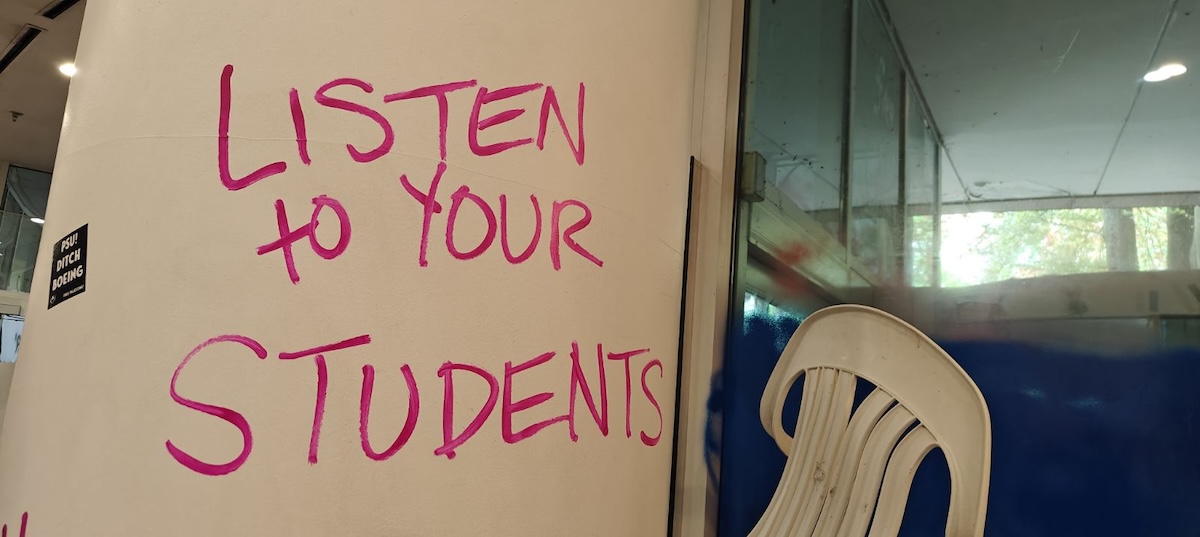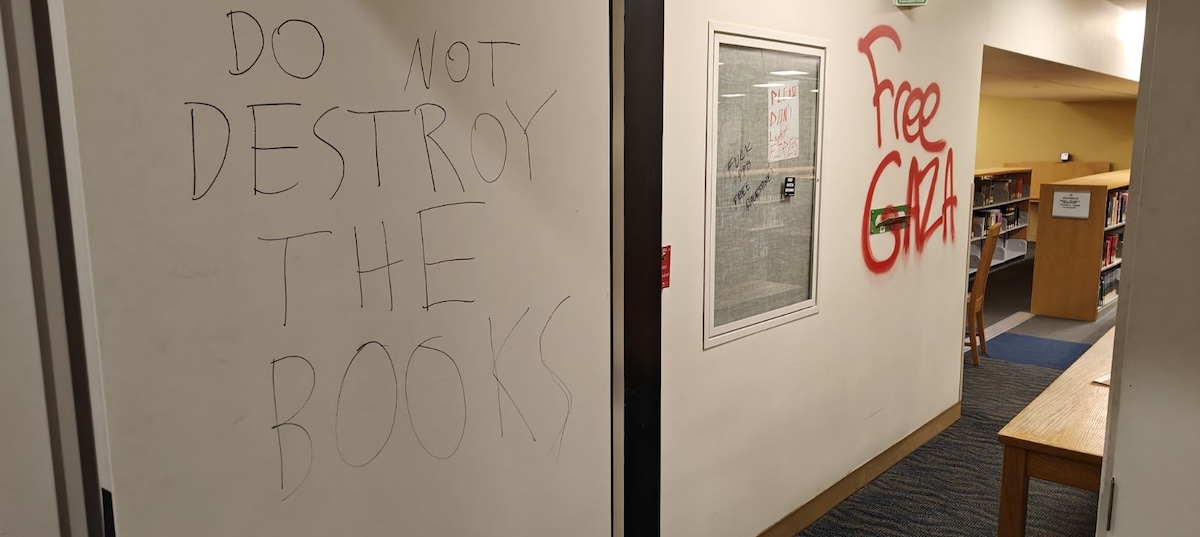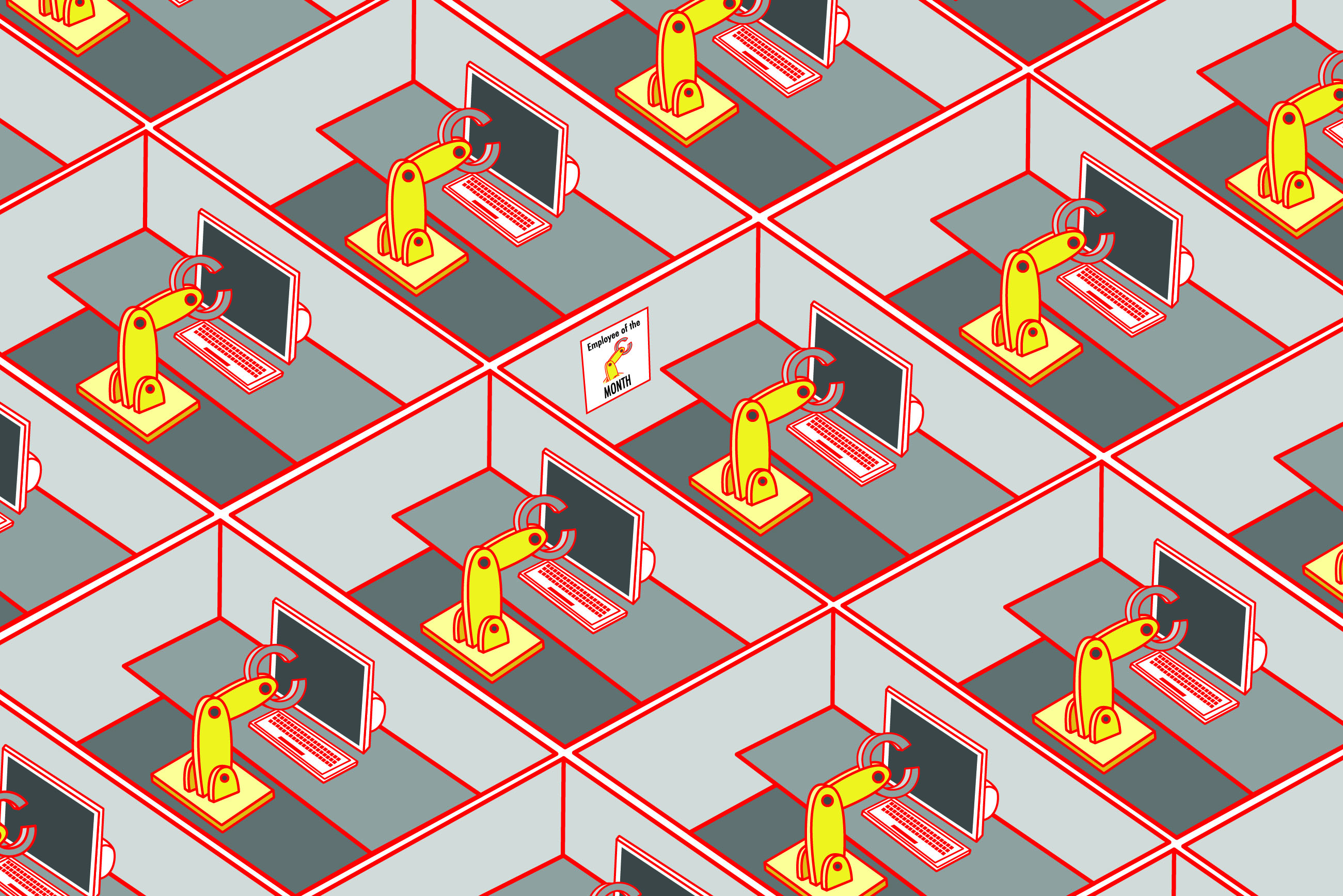After being absent for all of Summer term, fenced off and out of public view, the Branford Price Millar Library is open once again for all students to use. This is, of course, a good thing on its own—however, the reopening has been shrouded in a cloud of discontent.
As almost every media outlet in the city was happy to recount, the library closed after it was occupied by student protesters in late April to early May of last year. Students—who had gathered first on the park blocks—were standing up to the University’s “special recruiting and hiring relationship” with Boeing. They demanded an end to the University’s relationship with it and any other company complicit in helping to advance Israel’s genocidal campaign in Palestine—one which has grown to encompass not just Gaza but the West Bank and recently Lebanon.
Oregon Public Broadcasting (OPB)’s article about the grand reopening comes with the deck line, “The university’s library looks far different than it did five months ago, when demonstrators protesting the war in Gaza occupied it for several days.”
Similarly, KOIN’s article that cites the Fire Marshal’s claim that the building was left “uninhabitable” echoes President Ann Cudd’s attempts to falsely delineate between the efforts of nonviolent protests and students who engaged in direct action.
While many off-campus and corporate media sites are happy to toe the line of the University Administration and Portland Police Bureau (PPB), on-campus coverage actually dug into the nuts and bolts of the library’s reopening. PSU Vanguard’s coverage included an Instagram post, which included a more detailed cost breakdown of the repairs and a very important quote missing from nearly every other news source in the city.
Library staff noted that nothing irreplaceable was lost in the occupation.
So many corporate media outlets in the city were happy to paint the protests and occupation on campus as wanton, mindless destruction. These same outlets happily sang in the same choir that included the University Administration who wanted to save face and continue taking donations from Boeing, and the PPB who brought down a morning of massive violence against students gathered on May 2.
This does, however, put them at odds with PSU Student Media. This includes those who were present during the events being talked about, who spoke with protesters, who pulled near all-nighters to bring around-the-clock coverage and who deeply care about what goes on at this university. I myself gathered around 25 interviews with those present in the nights leading up to the police sweep.
KOIN—controlled by Nexstar Media Group, a company owned in part by infamous hedge funds such as BlackRock Inc.—began their article on the occupation while it was happening by holding up the narrative being pushed by the quadrumvirate of power including Mayor Ted Wheeler, Police Chief Bob Day, District Attorney Mike Schmidt and PSU President Ann Cudd.
These four would appear in lockstep with one another whenever a press conference was called to further demonize the protestors. Specifically, they all appeared next to one another at a press conference called three days before the police started their brutal sweep.
After repeating the words of the four people, KOIN would only interview one protestor, all the way at the very bottom of the article.
OregonLive—owned by the Advance Publications LLC, who also control Vogue, Vanity Fair, The New Yorker and many, many other magazines in a media empire grossing around $2.5 billion per year—were happy to quote PPB once again. The impression this article gives is one of a “slow, methodical approach to remove occupiers.”
This, of course, is directly at odds with what student journalists saw on the ground. PSU’s Sub Basement Studios released an Interview with a PSU Student witness. This video—hosted on their Youtube channel—not only contains phenomenal witness testimony from a student who witnessed both the incredibly violent police crack down and the car ramming attack that went under reported, but also unique footage and images taken by PSU Journalists who put themselves in harm’s way to report the truth.
Similarly, Vanguard’s Instagram Account was being updated around the clock with brief breaking news segments.
In one, you can witness the PPB drag away a protester who was in a wheelchair while surrounding students and shoving them with batons. At the second encampment attempt at Hoffmann Hall, Vanguard covered the fact that police charged into students before issuing any kind of warning. Beyond that, however, you can also see every protest action that took place while the Library was occupied. Vanguard and the rest of PSU Student Media were the only ones who bore witness and reported on the totality of the events.
PSU Student Media were also the first and some of the only media to actually engage in good faith with protesters—who released multiple statements to us exclusively. Similarly—after the fact—multiple students agreed to speak with us anonymously. This led to unique reporting and facts that have not been picked up on by other more mainstream media outlets. This includes details that came to light in our investigative reporting after the fact—for example, organizers and protesters testified to us that almost all of the damage to things like windows or computers occurred within the first, chaotic hour of entering the library. Afterwards, protesters inside the library established protocols to ensure that those there to exclusively commit acts of vandalism were ejected from the occupied area.
Furthermore, the “Timeline of Events” compiled by Vanguard paints a clear picture. Protesters started on the Park Blocks and returned to the Park Blocks. It was only after police kept threatening to evict them and harassed them by attempting to pull down tents did protesters move onto the portico of the library.
These dueling narratives are important to point out. Much of the media landscape—not just in Oregon but in the whole nation—is corporatized under large conglomerates. Nexstar controls KOIN, Tegna Inc. controls KGW, KPTV is owned by Fox News and The Oregonian is owned by Advance Publications. Even this pales in comparison to National media outlets like The Washington Post—owned and operated as Jeff Bezos’ personal fiefdom.
One narrative will fearmonger about graffiti on walls and loud slogans in a time where entire families are being slaughtered with United States bombs and weaponry. It will paint those students brave enough to fight the established systems as rowdy, as under informed and as childish. The other—presented by those who were present—will show the truth. That a scared campus administration called in the police on students—ignoring reasonable demands and escalating the situation to the point of boiling.
None of these news outlets will report the finer details that challenge the narratives at play—coming down from on high. Whether that be the police, corporate shareholders, the state, or the personal whim of whatever billionaire singularly owns their paper. It does then fall to independent journalists or students standing in a sea of people being assaulted by the state with their cellphones to record and show to the world that the truth is still alive and that the truth can still be reported by those who are not solely profit oriented.








